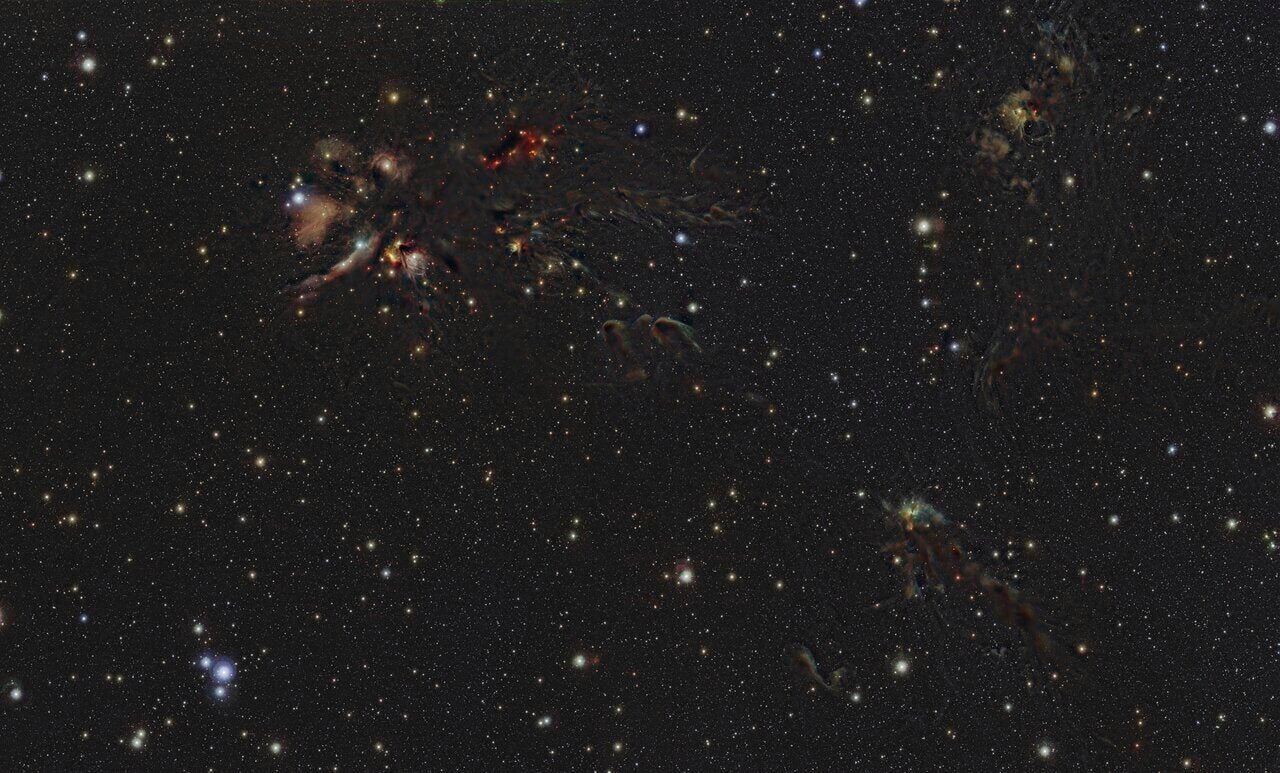Stunning mosaic of baby star clusters created from 1 million telescope shots
Astronomers have created a stunning mosaic of baby star clusters hiding in our galactic backyard

Your support helps us to tell the story
From reproductive rights to climate change to Big Tech, The Independent is on the ground when the story is developing. Whether it's investigating the financials of Elon Musk's pro-Trump PAC or producing our latest documentary, 'The A Word', which shines a light on the American women fighting for reproductive rights, we know how important it is to parse out the facts from the messaging.
At such a critical moment in US history, we need reporters on the ground. Your donation allows us to keep sending journalists to speak to both sides of the story.
The Independent is trusted by Americans across the entire political spectrum. And unlike many other quality news outlets, we choose not to lock Americans out of our reporting and analysis with paywalls. We believe quality journalism should be available to everyone, paid for by those who can afford it.
Your support makes all the difference.Astronomers have created a stunning mosaic of baby star clusters hiding in our galactic backyard.
The montage, published Thursday, reveals five vast stellar nurseries less than 1,500 light-years away. A light-year is nearly 6 trillion miles (9.7 trillion kilometers).
To come up with their atlas, scientists pieced together more than 1 million images taken over five years by the European Southern Observatory in Chile. The observatory’s infrared survey telescope was able to peer through clouds of dust and discern infant stars.
"We can detect even the faintest sources of light, like stars far less massive than the sun, revealing objects that no one has ever seen before,” University of Vienna's Stefan Meingast, the lead author, said in a statement.
The observations, conducted from 2017 to 2022, will help researchers better understand how stars evolve from dust, Meingast said.
The findings, appearing in the journal Astronomy and Astrophysics, complement observations by the European Space Agency's star-mapping Gaia spacecraft, orbiting nearly 1 million miles (1.5 million kilometers) away.
Gaia focuses on optical light, missing most of the objects obscured by cosmic dust, the researchers said.
___
The Associated Press Health and Science Department receives support from the Howard Hughes Medical Institute’s Science and Educational Media Group. The AP is solely responsible for all content.